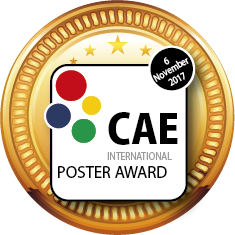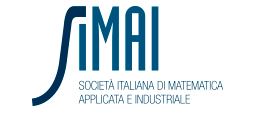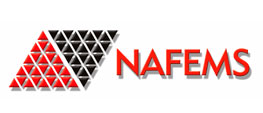
Poster Award - THE FIVE COMPETITION WINNERS
25. A multiscale simulation framework of the accumulative roll bonding process accounting for texture evolution
Arun Prakash, H.W: Höppel, E. Bitzek
Friedrich-Alexander-Universität Erlangen-Nürnberg
Wolfram Nöhring
Laboratory of Multiscale Mechanics Modeling, École Polytechnique Fédérale de Lausanne
R.A. Lebensohn
Los Alamos National Lab, Los Alamos, NM, USA
Accumulative Roll Bonding (ARB) has attracted considerable interest as a process for producing metal sheets with ultrafine-grained microstructure. The high mechanical strength exhibited by these sheets shows potential for applications in the automotive industry. To date, most research work has been focussed on experimental investigations of the properties of ARB sheets, and their relation to process parameters. By contrast, very few numerical investigations can be found in the literature, especially those that focus on the description of the microstructure and texture that is fundamental to the enhanced properties of such sheets.
In this work, we propose a computational framework that allows us to simulate multiple-pass ARB and the texture evolution during the process. Our framework embeds the well-known visco-plastic self-consistent (VPSC) model in a finite element (FE) realization of the ARB process. To facilitate multiple pass rolling, we propose a novel solution mapping scheme that transfers the material state from the deformed finite element mesh to a new one. Additionally, we implement a two-level parallelization scheme – with decomposition of the FE domain using message passing interface (MPI) and thread based parallelization of the material response using openMP– to ensure reduced simulation times. The predictive capabilities of the proposed framework are demonstrated by simulating the accumulative roll bonding of aluminum alloy AA5754 sheets. The simulations validate the working of the solution mapping scheme, and clearly show the development of a through thickness gradient of texture and anisotropy in the roll-bonded sheet after two passes. Computation times with a full 3D setup and the two-level parallelization are approximately 30% of those with purely domain-decomposition based parallelization. The results presented clearly show the advantage of the proposed simulation framework.
Sheet Metal Production - Aerospace and Automotive
17. Mechanical analysis of the toroidal and poloidal field coils for demonstrating nuclear fusion reactor
Lorenzo Giannini, Alessandro Anemona
ICAS scrl, University of Rome "La Sapienza"
Lorenzo Zoboli, Giordano Tomassetti
ENEA, University of Rome "Tor Vergata"
The DEMO magnet system consists of 18 toroidal magnets (TFC), 6 poloidal magnets (PFC) and a central solenoid (CS). Operating currents and intense magnetic fields generate high stresses in these structures. In the pre-design phase in-depth mechanical analyses are needed so as to obtain a structurally and competitively solid power reactor for the future world energy demands. Separate ANSYS static structural analyses for the TF and PF are here presented. A topology optimised design for the intercoil supports is also given.
Energy
01. Structural optimization and geometric modeling of lattice structures for Addictive Manufacturing
Gianpaolo Savio,
Andrea Curtarello, Stefano Rosso, Roberto Meneghello, Gianmaria Concheri
University of Padova
Additive manufacturing technologies enable the fabrication of innovative components not achievable by other technologies, such as cellular structures, characterized by lightness and good mechanical properties. In this work a new structural optimization and geometric modelling approach is proposed to design regular cellular structures as a function of material, loads and constraint conditions. Several cell types were studied and a classification as a function of boundary conditions, relative density and compliance was proposed.
Additive manufacturing technology
08. Electro-thermal Finite Element Analysis for biomedical application. Reconstruction of a phantom: from EM safety up to treatment planning
Christian Bianchi, Michele Forzan, Fabrizio Dughiero
University of Padova
Thanks to the rapid growth of the computer hardware resources, nowadays it is possible to create numerical phantoms of human bodies which are sophisticated enough to guarantee an high level of computational accuracy. In case of bio-electromagnetic compatibility, the implemented models can be used to assess realistic conditions of exposure for common situations in real life (e.g. expsosure due to a telecommunication device, microwave oven leakage, etc.), or for analyzing the conditions under electromagnetic therapy (e.g. hyperthermia, electrostimulation, etc). In this poster, we show the main steps of numerical implementation that are necessary to obtain reliable results from a large-complex 3D multiphysical coupled model of a human body phantom.
Biomedical
15. On the importance of anisotropy in biological materials: application to aortic tissues
Nicole Casalini, Giulia Luraghi, Francesco Migliavacca, José Félix Rodriguez Matas
Politecnico di Milano
Modelling of biological tissues in numerical simulations requires an accurate choice of the constitutive laws, whose influence could be determinant to obtain reliable results. The aim of this work is the implementation of a user-defined material, which allows to model in ANSYS LS-DYNA a hyperplastic matrix with two different families of embedded fibers, whose directions can be locally imposed. Finite element simulations on a biological heart valve and a reconstructed aortic root with physiological load were carried out with linear elastic, isotropic and anisotropic materials.
Biomechanics
Poster Award - THE Finalists
01. Structural optimization and geometric modeling of lattice structures for Addictive Manufacturing
Gianpaolo Savio,
Andrea Curtarello, Stefano Rosso, Roberto Meneghello, Gianmaria Concheri
University of Padova
Additive manufacturing technologies enable the fabrication of innovative components not achievable by other technologies, such as cellular structures, characterized by lightness and good mechanical properties. In this work a new structural optimization and geometric modelling approach is proposed to design regular cellular structures as a function of material, loads and constraint conditions. Several cell types were studied and a classification as a function of boundary conditions, relative density and compliance was proposed.
Additive manufacturing technology
02. Finite Element Thermal Analysis of Metal Parts Additively Manufactured via Selective Laser Melting
Dario Pitassi, Enrico Savoia, Matteo Benedetti, Vigilio Fontanari, Alberto Molinari
University of Trento
Valerio Luchin, Gianluca Zappini
Eurocoating S.p.A.
In this chapter, a three-dimensional finite element model is developed to simulate the thermal behavior of the molten pool in Selective Laser Melting (SLM) process. Laser-based Additive Manufacturing (AM) is a near-net shape manufacturing process able to produce net-shape 3D objects starting from metallic powders melted layer by layer from laser heat source. The interaction between laser and material occurs within a few microseconds hence transient behavior must be taken into account. Moreover, since the material properties depend on temperatures, the model is nonlinear. A calibration procedure is carried out to fit the numerical solution with the experimental data. Once the calibration has corrected the thermal parameters, a dynamic mesh refinement is applied to reduce the computational costs. Special carecare is taken in devising a mapped mesh discretization scheme, ensuring that the travelling subdomain centered on the laser spot changes as less as possible the mesh of the remaining subdomains . The scanning strategy adopted by the laser is simulated by a path simulator built using MatLab, while numerical analysis is carried out using ANSYS, a commercial finite element software. To improve the performances of the simulation the two software interact each other to solve the analysis. By this method, temperature distribution and geometrical feature of the molten pool under different process condition are investigated. Results from the FE analysis provide guidance for setting up the optimization of process parameters and develop a base for further residual stress analysis.
Mechanics
03. Sucker Rod Pump Fluid Friction Evaluation
Clemens Langbauer,
Petr Vita
Montanuniversität Leoben
Sucker rod pumps are one kind of artificial lift system to produce crude oil from non-naturally flowing reservoirs. This system consists of the pump jack, situated at the surface, the subsurface pump, position in the wellbore and the connecting link, called sucker rod string.
The sucker rod string is assembled out of coupled individual rods and rod guides stabilise its up- and downward motion in the production tubing string.
As a result of the pump’s working principle, during the upstroke the rod string and the fluid are travelling at almost the same speed, during the downstroke the rod string is pushed through the static fluid column.
For increasing the lifetime of the pumping system and performing predictive maintenance an accurate knowledge about the downhole condition is required. Downhole measurements can hardly be performed because of the harsh environment in the well. As a result the presented simulation is used to give precise information about the fluid interaction with the sucker rod string and the production tubing.
Consumer Goods
04. Innovative and high performance ADCS for mini and nano satellites
Rosa Maria Mininni
University of Bari Aldo Moro - Dipartimento di Matematica
Cristoforo Abbattista, Nicolò Taggio
Planetek Italia
The miniaturized technologies for the space segment of satellite launch industries have grown rapidly in the last years. Several kind of small satellite have been built, including mini and nano satellites. For these satellites particular miniaturized devices have to be used. A widely used method in literature to estimate the state of a satellite (attitude, position, velocity, etc) is the Extended Kalman Filter, not very accurate in the presence of high non linearities. We propose a new algorithm, called UKFplus, for application to satellites with “variable attitude“ as well as “stable attitude".
Aerospace
05. Hydraulic Subsurface Pump Numerical Study
Gerald Jax, Clemens Langbauer, Petr Vita
Chair of Petroleum & Geothermal Energy Recovery - Montanuniversität
A numerical study on an innovative hydraulic subsurface pump, which eliminates some sources of potential failure appearing at other artificial lift systems in oil production, was conducted using the open-source software toolbox OpenFOAM. A complex mesh movement including a deforming mesh region and a sliding interface reacts to the pressure forces in the pump. The results will be used in the optimization and further development of the hydraulic subsurface pump concept.
Oil and Gas
06. Performance analysis of a tracked vehicle using Multi-Body Simulation
Francesco Mocera,
Andrea Nicolini
Politecnico di Torino
Tracked industrial vehicles are flexible self-propelled working machines that can be found in several industrial fields: construction, agriculture, earthmoving, green maintenance. Compared with other industrial vehicles, they usually have great stability due to their lower centre of gravity that allows for better performance on unstructured fields. They can be equipped with different tools giving them great versatility as working machinery. These tools may change consistently the weight distribution of the vehicle having a strong effect on its dynamic performance and maximum tractive force.
In this work, a Multi-Body (MTB) model of a tracked vehicle is shown. Its main aim is to provide an instrument able to exploit machine’s performance in case of different equipped tool and different ground characteristics.
Mechanics
07. Definition of an innovative design methodology through topological optimization applied to welded structures
Andrea Blengino
Politecnico di Torino
The aim is the definition of an innovative design methodology through topological optimization applied to welded structures. Optimization allows to identify areas in a component where material is useless and can be eliminated in order to lightening the product. The result of the optimization is often difficult to achieve with traditional mechanical machining, but easily achievable with additive manufacturing; this is the reason why it is necessary to establish a design methodology that allows to guide optimization in order to obtain structures easily achievable with welded tubes and plates.
Automotive
08. Electro-thermal Finite Element Analysis for biomedical application. Reconstruction of a phantom: from EM safety up to treatment planning
Christian Bianchi, Michele Forzan, Fabrizio Dughiero
University of Padova
Thanks to the rapid growth of the computer hardware resources, nowadays it is possible to create numerical phantoms of human bodies which are sophisticated enough to guarantee an high level of computational accuracy. In case of bio-electromagnetic compatibility, the implemented models can be used to assess realistic conditions of exposure for common situations in real life (e.g. expsosure due to a telecommunication device, microwave oven leakage, etc.), or for analyzing the conditions under electromagnetic therapy (e.g. hyperthermia, electrostimulation, etc). In this poster, we show the main steps of numerical implementation that are necessary to obtain reliable results from a large-complex 3D multiphysical coupled model of a human body phantom.
Biomedical
09. FEM Modelling of Passenger Safety Devices in an Electric Ultra-Light Vehicle
Emanuele Vincenzo Arcieri, Sergio Baragetti
University of Bergamo
Michele Fustinoni, Stefano Lanzini,
Roberto Papalia
NOVA Srl
The effectiveness of passenger safety devices on an electric vehicle was studied using finite element analysis. The car derives from a heavy quadricycle and has a pioneering tubular chassis.
The potentialities in case of frontal and side impacts were investigated by means of two models containing only the components of the car nearby the driver.
Geometry, placing and folding were studied for the frontal and the curtain airbags in the models. Modelling of the mechanisms of the belts (retractor, pretensioner and load limiter) was another critical issue.
The obtained values of HIC (head injury criterion) highlighted the necessity of the examined devices.
Automotive
10. Three dimensional flow in the root area of a wind turbine predicted by high fidelity CFD simulations
Galih Bangga
Institute of Aerodynamics and Gas Dynamics, University of Stuttgart
The flow situation in the root area of a wind turbine blade is very complex as it involves massively separated flow field at high angles of attack and under the influence of rotor rotation. This causes the augmentation of the sectional lift coefficient, and consequently the resulting blade loads, compared to the two dimensional (2D) conditions [1-3] hindering the use of simplified 2D approaches to predict the performance of the turbine. In order to assess these phenomena, high fidellity Computational Fluid Dynamics (CFD) simulations using the FLOWer code from the German Aerospace Center (DLR) were carried out. The computations were conducted based on a fully meshed MEXICO turbine.
Energy
11. The PARC_CL 2.1: implementation, validation and application on RC columns
Francesca Vecchi
University of Parma
Collapse mechanisms of existing reinforced concrete (RC) members subjected to cyclic loading are often due to buckling phenomena of longitudinal bars. Indeed lacking of detailing in existing structures, like high value of stirrups spacing, is often associated to bar slenderness values that typically may cause second order effects. Furthermore damage induced by environmental actions, like corrosion, can cause breaking of stirrups or transversal area reduction of longitudinal bars which may increase the buckling effects on steel bars. In the poster the new PARC_CL 2.1 crack model (Physical Approach for Reinforced Concrete under Cyclic Loading condition) is presented. PARC_CL2.1 crack model is a fixed crack model assuming smeared reinforcement: it is implemented in UMAT.for user subroutine of Abaqus software. It is able to consider plastic deformations and hysteretic cycles. To take into account for the softening of steel in compression in case of bar slenderness values higher than 5, the Monti-Nuti model has been implemented in PARC_CL2.1 for the nonlinear finite element analysis of RC members subjected to cyclic loading.
Civil Engineering
12. From SYSTEMS to ELECTRONIC CIRCUIT: a CAE flow strategy
Claudia Corradino
University of Catania
Data-driven model identification is essential for real system investigation and control strategies design.
Moreover, mathematical models able to reproduce systems dynamical behaviors do not fully describe all their properties that may rather be caught by exploiting analogies with hydraulic , mechanical, or electronic systems whose models resembles the mathematical one.
Physical analogues may be easily designed and implemented, as a consequence, performing experiments on these allows to fine-tune system parameters of the mathematical model in order to fit real data accounting for non-ideal effects.
This approach si adopted in many industrial and research fields such as in nuclear fusion area where physical analogues of ideal models have been formulated to reproduce the main non linear dynamics characterizing critical events such as plasma instabilities occurrences. In this work, a CAE flow strategy able to automatically identify, design and implement a model from raw data is proposed. The overall process follows a batch approach where a sequence of actions are automatically performed; each one, except from the circuit implementation phase, is characterized by software tools able to provide as output the required input for the following step. During the overall CAE flow, testing phases are also performed and the required conditional actions initiated. CAE flow will result in the mutual interaction of CAE tools capable to deal with all the challenges related to the identification, design, implementation, analysis and characterization of the final electronic analog system. It is important to highlight the possibility to use selected actions instead of the whole set. In order to show the effectiveness of the adopted approach a case of study related to plasma instabilities is discussed.
Energy
13. Infinity Computing in Global and Local Optimization
Dmitri Kvasov, Marat Mukhametzhanov
DIMES, University of Calabria
The research is dedicated to solving optimization problems on the Infinity Computer. Important industrial applications of this work include image processing and noisy data fitting. Problems of this kind can be ill-conditioned and expensive to solve. Here, several important instances of ill-conditioned problems are tackled by using the Infinity Computer. Powerful multivariable optimization schemes are proposed: global optimization algorithms based on adaptive diagonal curves, acceleration techniques in univariate global optimization, exact penalty functions in constrained optimization.
Information and Communication Technologies
14. Investigation on blast resistance of precast reinforced concrete floor slab
Nicola Bonora, Domenico Gentile, Gianluca Iannitti, Sonia Marfia, Andrew Ruggiero, Elio Sacco, Gabriel Testa
University of Cassino and Southern Lazio
The knowledge of the effective blast resistance of civil infrastructures is a fundamental information for risk assessment and modelling consequences of terrorist attack in high population density urban environment.
In this work, blast resistance of precast reinforced concrete floor slab, commonly used for commercial parking, was investigated performing blast tests, detonating bare explosive charge of EXEM 100 in contact with the slab. The charge mass was varied in order to generate different damage extents, from visible to fully breached condition.
Numerical simulations of the tests were performed considering all slab structural elements with the aim of analyzing the failure modes of the slab.
Civil Engineering
15. On the importance of anisotropy in biological materials: application to aortic tissues
Nicole Casalini, Giulia Luraghi, Francesco Migliavacca, José Félix Rodriguez Matas
Politecnico di Milano
Modelling of biological tissues in numerical simulations requires an accurate choice of the constitutive laws, whose influence could be determinant to obtain reliable results. The aim of this work is the implementation of a user-defined material, which allows to model in ANSYS LS-DYNA a hyperplastic matrix with two different families of embedded fibers, whose directions can be locally imposed. Finite element simulations on a biological heart valve and a reconstructed aortic root with physiological load were carried out with linear elastic, isotropic and anisotropic materials.
Biomechanics
16. Cost-performance optimization: a method to improve company’s competitiveness
Vincenzo Castorani, Alessio Vita, Michele Germani, Marco Mandolini
Università Politecnica delle Marche
This poster presents an approach for product multi-objective optimization based on Response Surface methodology, DOE techniques and CAD/CAE/DfC tools integration. This automated methodology demnostrates high reliability and ease of use. Results show significant improvements in product design and in the reduction of design effort.
Mechanics
17. Mechanical analysis of the toroidal and poloidal field coils for demonstrating nuclear fusion reactor
Lorenzo Giannini, Alessandro Anemona
ICAS scrl, University of Rome "La Sapienza"
Lorenzo Zoboli, Giordano Tomassetti
ENEA, University of Rome "Tor Vergata"
The DEMO magnet system consists of 18 toroidal magnets (TFC), 6 poloidal magnets (PFC) and a central solenoid (CS). Operating currents and intense magnetic fields generate high stresses in these structures. In the pre-design phase in-depth mechanical analyses are needed so as to obtain a structurally and competitively solid power reactor for the future world energy demands. Separate ANSYS static structural analyses for the TF and PF are here presented. A topology optimised design for the intercoil supports is also given.
Energy
18. Genetic algorithms application in water distribution systems for leakages detection
Giacomo Dolzani, Fabio Merzari, Alice Limoli
University of Trento
The aim of this research is the implementation of a code which identifes areas of a water distribution system most subject to losses.
The author has implemented a C code, using the NSGA-II genetic algorithm, coupled with EPANET 2.
Given a WDS, a number of leakages have been placed in known locations and pressure at the nodes has been computed.
The code works through these steps
- generation of a new net with random leakages
- computation of pressure at nodes
- computation of the sum of pressure's dfference at the nodes between the new net and the one with known losses
- minimization of the sum value
Civil Engineering
19. Alternative stack topologies for Vanadium Redox Flow Batteries
Andrea Trovò, Massimo Guarnieri, Stefano Bortolin, Davide Del Col, Federico Moro, Piergiorgio Alotto
University of Padova
This work was done within the MAESTRA strategic project of the University of Padua and aims at developing state-of-the-art technologies, for Vanadium Redox Flow Batteries (VRFBs) which are needed for the production of more efficient and flexible devices, by optimizing cell and stack geometries, power management units and supervisor systems. For developing the experimental investigations, a fully-monitored test facility has been built, rated 4 kW-24 kWh, provided with a 40- cell stack and two 500 L tanks. It is provided with two flow pumps powered by analog-controlled brushless motors, a bidirectional power management system, a Labview-based battery management system (BMS), multi-voltage and current meters, pressure and voltage measurements. The test program include stack voltage vs SOC (state of charge) in charging and discharging, electric power flow, temperature analysis, distribution of stack voltage, polarization curves, electrochemical impedance spectroscopy (EIS), efficiency measurements, aging effects. The experimental campaign is supported by extensive numerical analyses. Recently, two battery topologies have been studied and compared. In the conventional series stack, cells are connected electrically in series and hydraulically in parallel by means of bipolar plates. The alternative topology consists of cells connected in parallel inside stacks by means of monopolar plates, in order to reduce shunt currents along channels and manifolds. Channeled and flat current collectors interposed between cells have been considered in both topologies. In order to compute the stack losses, an equivalent circuit model of a VRFB cell was built from a 2D FEM multiphysics numerical model based on Comsol®, accounting for coupled electrical, electrochemical, and charge and mass transport phenomena. Shunt currents were computed inside the cells with 3D FEM models and in the piping and manifolds by means of equivalent circuits solved with Matlab®. Hydraulic losses were computed with analytical models in piping and manifolds and with 3D numerical analyses based on ANSYS Fluent® in the cell porous electrodes. The alternative topology with channeled current collectors exhibits pumping and shunt current losses one order of magnitude lower than a conventional battery rated at the same power, resulting in around-trip efficiency 10% higher, as compared to the conventional topology.
Energy
20. Re-powering Structures via Simulation & Monitoring
Vasilis Dertimanis, Eleni Chatzi
ETH Switzerland - Zurich
We address the problem of simulating large-scale uncertain FE models and we propose a solution that is based on (i) substructuring, (ii) model reduction, and (iii) estimation of reduced order ARX-based metamodels. We assess our method using a FE model of a vehicle frame with 46000 DOFs. Then, we proceed in treating the structural damage detection and localization problem using sparse strain measurements, kriging and spatiotemporal observers. We test our method using simulated data from an ANSYS FE model of a small-scale wind turbine blade.
Mechanics
21. Virtual Modelling of the Dynamics of a Milling Machine through FEM and MBS Approaches
Davide Piccinin
University of Padova
Study of the dynamics of a milling machine through MBS and FEM approaches. In this Poster we explained how we conduct and experimental research in order to understand if FEM and MBS approaches are suitable to study th chatter phenomon in milling machining. We discovered that MBS and FEM are suitable, but characterization of materials, connections and bindings are fundamental.
Mechanics
22. Magnetic Power Loss Estimation in Coaxial Magnetic Gears
Mattia Filippini
University of Padova, Department of Industrial Engineering
This poster proposes a procedure for computing magnetic loss in the iron regions of coaxial magnetic gears. These magnetic structures are made of permanent magnets and ferromagnetic poles in relative motion transferring torque between two shafts in a contactless way. The losses computation in magnetic materials is crucial to define the magnetic transmission performance. Flux distribution inside ferromagnetic parts is computed by means of finite element and cell method and then a model of iron losses taking into account the rotational nature of the flux loci is applied. The procedure will become part of an electro-mechanical model for the evaluation of the whole chain of power conversion both in static and in dynamic conditions.
Energy
23. A 3-D-PEEC Formulation Based on the Cell Method for Full-Wave Analyses with Conductive, Dielectric, and Magnetic Media
Riccardo Torchio, Piergiorgio Alotto, Paolo Bettini, Dimitri Vltolina
University of Padova
A novel Partial Element Equivalent Circuit formulation for solving full-Maxwell’s equations, with homogeneous and linear conductive, dielectric, and magnetic media is presented. It is based on the Cell Method, which by using integral variables as problem unknowns, is naturally suited for developing circuit like approaches. Volume meshing allows complex 3D geometries, with electric and magnetic materials, to be discretized. Electromagnetic couplings in the air domain are modelled by integral equations taking into account the time delay effects on the electromagnetic fields propagation.
Electronics
24. The role of inelastic deformations in the mechanical response of endovascular nickel-titanium devices
Francesca Berti, Dario Allegretti, Alessandro Bertini, Giancarlo Pennati, Francesco Migliavacca, Lorenza Petrini
Politecnico di Milano
Nitinol is commonly used for producing cardiovascular devices for mini-invasive applications. For example, percutaneous valves require a pre-operative crimping which introduces large strains that may cause plasticity in Nitinol. This may also affect the device response during further cyclic loads. A new constitutive model, able to consider inelastic strains due to plasticity and fatigue, is validated and used to simulate an in-vivo scenario. The aim is to show the influence of the material model on the fatigue prediction of devices.
Biomechanics
25. A multiscale simulation framework of the accumulative roll bonding process accounting for texture evolution
Arun Prakash, H.W: Höppel, E. Bitzek
Friedrich-Alexander-Universität Erlangen-Nürnberg
Wolfram Nöhring
Laboratory of Multiscale Mechanics Modeling, École Polytechnique Fédérale de Lausanne
R.A. Lebensohn
Los Alamos National Lab, Los Alamos, NM, USA
Accumulative Roll Bonding (ARB) has attracted considerable interest as a process for producing metal sheets with ultrafine-grained microstructure. The high mechanical strength exhibited by these sheets shows potential for applications in the automotive industry. To date, most research work has been focussed on experimental investigations of the properties of ARB sheets, and their relation to process parameters. By contrast, very few numerical investigations can be found in the literature, especially those that focus on the description of the microstructure and texture that is fundamental to the enhanced properties of such sheets.
In this work, we propose a computational framework that allows us to simulate multiple-pass ARB and the texture evolution during the process. Our framework embeds the well-known visco-plastic self-consistent (VPSC) model in a finite element (FE) realization of the ARB process. To facilitate multiple pass rolling, we propose a novel solution mapping scheme that transfers the material state from the deformed finite element mesh to a new one. Additionally, we implement a two-level parallelization scheme – with decomposition of the FE domain using message passing interface (MPI) and thread based parallelization of the material response using openMP– to ensure reduced simulation times. The predictive capabilities of the proposed framework are demonstrated by simulating the accumulative roll bonding of aluminum alloy AA5754 sheets. The simulations validate the working of the solution mapping scheme, and clearly show the development of a through thickness gradient of texture and anisotropy in the roll-bonded sheet after two passes. Computation times with a full 3D setup and the two-level parallelization are approximately 30% of those with purely domain-decomposition based parallelization. The results presented clearly show the advantage of the proposed simulation framework.
Sheet Metal Production - Aerospace and Automotive
26. Design and optimization of hybrid electric power systems for unmanned aerial vehicles
Teresa Donateo, Antonio Ficarella
University of Salento
A design methodology for series and parallel hybrid electric power systems based has been developed and applied to Unmanned Aerial Vehicles of different size. Scalable models were used for engines, fuel cells motors and the batteries. The inputs were: engine size, hybridization degree and battery specifications. For the quadcopter, the best fuel economy was obtained with a conventional power system whereas the series hybrid electric allowed an improvement of endurance from 52.4 minutes with the electric powertrain to 72.8 minutes with the hybrid one for the hexacopter.
An average improvement of about 10% with respect to a thermal configuration was obtained in the larger UAVs despite of the larger mass.
Aerospace
27. Predicting tolerances in the design of welded automotive chassis
Francesco Leali, Cristina Renzi, Davide Panari
University of Modena and Reggio Emilia
Nowadays, chassis design is more and more characterized by the use of lightweight materials, such as aluminum, for downsizing reasons. Nevertheless, the assembly of thin aluminum structures represents a challenge from a technological point of view, especially due to the distortions caused by the welding process. The prediction of welding distortions is mainly carried out by means of Thermal Elastic Plastic (TEP) Finite Element Analysis (FEA), that is capable to replicate the transient thermal heat flux generated by the torch during welding. Nevertheless, this requires high computational efforts, especially for handling complex geometries typical of the automotive design. To overcome this problem, in this poster, the local/global approach has been adopted, to predict distortions due to the welding process. As a case study, a top class car aluminum chassis has been chosen. Moreover, a sensitivity analysis on the effect of the variation of the process input parameters (dimensional tolerances and heat input variation) on the final distortions has been added.
Automotive
28. Business Model Innovation: Drivers & Challenges
Matteo Zanoletti
University of Bergamo
Starting from the Business Model Activity System Perspective of Amit and Zott I analyse the business model of firms involved in recording industry and in computer aided engineering (CAE) software industry. The perspective provided by Amit and Zott describes the business model as a system of interdependent activities which compose the structure of a firm. In the last years the two industries considered here suffered deep changes, and I observe the modifications in the business model of firms with the aim to extrapolate some common factor. My aim is to understand the logics connected to business model innovation which allow the creation of new value for the stakeholders of a firm.
I utilize a structured method of analysis, based on Activity System Perspective, to evaluate the changes in the business model of market leaders of the industries previously named and to individuate the drivers which push toward the innovation of the business model. I individuate for both industries also another firm, considered an outsider, which is very interesting to cross-test the method: the two outsiders created an innovative business model, different from the business model of the market leaders, nevertheless they have a huge success in terms of sales.
All the analysed firms are considering internet and its network like a “real” field, which provide new opportunities, but to exploit these chances and to create new value companies have to innovate their business model.
The method allows me to underline the importance of a holistic approach during business model design, where the most challenging aspect is to create a business model fitting with the strategy of the focal firm and with the ecosystem surrounding the firm. The analysis reveals that common elements exist among all the firms about business model innovation (spanning the boundaries, changing the revenue model and a new market proposition), nevertheless the approach is different: the market leaders are more prone to add activities, while outsiders are more oriented to create a minimalist business model, consequentially they face different challenges.
Software
29. A 3-D FEM model for Capacitive Micromachined Ultrasonic Transducers for Ultrasound Imaging made by Reverse Fabrication Process
Monica La Mura, Nicola Antonio Lamberti
University of Salerno
Alessandro Stuart Savoia, Giosuè Caliano
University of Roma Tre
Capacitive Micromachined Ultrasonic Transducers (CMUTs) are MEMS devices made of micro-membranes, particularly suited for Ultrasound Imaging applications. CMUT arrays are the best candidates to make US imaging more flexible and efficient. The propagation of acoustic waves produced by multiple vibrating membranes into a fluid-like medium requires a multifield analysis: our goal is to optimize the design of CMUT imaging arrays made by Reverse Fabrication Process, a fabrication technique proposed by the University of Roma Tre, by means of a 3-D FEM model for water-coupled pulse-echo operation.
Electronics
30. Design of a High Gradient S-Band, Traveling Wave Accelerating Structure
Ivan Cudin, Claudio Serpico
Elettra Sincrotrone Trieste S.C.p.A di interesse nazionale
FERMI is the seeded FEL user facility at the Elettra laboratory in Trieste, operating in the VUV to EUV and soft X-rays spectral range; the radiation produced by the seeded FEL is characterized by several desirable properties, such as wavelength stability, low temporal jitter and longitudinal coherence.
The poster presents the design of an S-band, high gradient accelerating structure. It summarizes the results of the RF analysis performed on the regular cell. Both surface fields and RF parameters have been evaluated and optimized. A parametric analysis has also been set up to verify the mechanical tolerances to be used during production processes.
At the end, an ANSYS multi-physics environment has been used to get the thermal profile and the subsequent detuning along the accelerating structure. A prototype will validate the simulations.
Research
31. Discrete Element simulations of the penetration mechanics in granular media
Roberto Guarino, Nicola Maria Pugno
University of Trento
Barbara Mazzolai
Istituto Italiano di Tecnologia
In this work we present numerical simulations through the Discrete Element Method of the penetration mechanics in granular media. We evaluate the penetration performance of different probe geometries, with a particular focus on the penetration force and the contact number of the particles. The results of our study can be of interest for the optimization of soil penetration activities, also by exploiting bio-inspired solutions.
Mechanics
32. Anisotropic adaptive stabilized finite element solver for RANS models
Ghalia Guiza, Alexandre Boilley, Philippe Meliga, Elie Hachem
Mines ParisTech, PSL - Research university, Cemef
We present an adequate CFD (Computational Fluid Dynamics) framework for performing accurate numerical simulations of turbulent flows past complex geometries at high Reynolds number. The proposed method starts by the use of anisotropic semi-structured mesh to generate efficiently and reliably boundary layer meshes. A Variational MultiScale (VMS) stabilized finite element method is designed to resolve the incompressible Navier-Stokes equations. The Streamline Upwind Petrov-Galerkin (SUPG) method is applied to solve the Spalart-Allmaras turbulence model. The advantage of this framework is its capability to deal with a multi-criteria adaptation such as the boundary layers, the velocity field and the turbulent eddy viscosity. The proposed method was validated on an industrial application: a stratospheric airship.
Aerospace
33. Structural and Optimization Analysis of the Particle Detector MU2E Calorimeter
Maria Rosaria Marulli
University of Salento
The focus of the poster is the MU2E particle detector calorimeter that will be used at FermiLab in Chicago to observe muon-to-electron conversion and to clarify how particles created at the beginning of the universe broke down into stable lighter particles. The goal of the activity was to optimize the structural performance with attention to the inorganic scintillator crystals. Furthermore, studying the calorimeter assembly was necessary to avoid interferences between components during the realization phase and to ensure the perfect coupling between the crystals and the external structure.
Mechanics
34. A computational model of the interaction between continua and networks: application to microcirculation and uremy
Luca Possenti, Giustina Casagrande, Simone Di Gregorio, Maria Laura Costantino, Paolo Zunino
Department of Chemistry, Materials and Chemical Engineering “Giulio Natta”, Politecnico di Milano
The finite element model - implemented using the open source software GetFEM++ (getfem.org) - has the unique ability of combining the following features:
• realistic vasculature
• coupled capillary and interstitial flow
• haematocrit dependent flow properties
• prediction of red blood cells (RBCs) distribution along the vasculature
• non-linear description of the lymphatic drainage.
After this preliminary comparison against literature data (mean interstitial pressure), we analysed variations concerning the other variables using parameters referred to healthy subject and uremic patient.
Biomechanics
35. Fire Numerical Simulation for Securing Road Infrastructures
Marti Marina, Zavarise Giorgio
University of Salento
Gori Sandro
EnginSoft Spa
We operated the modelling using Fire Dynamics Simulator (FDS) of the Condò Gallery in Lecce, Italy. To simulate the scenario all the geometry of the gallery has been considered, both tubes, in order to evaluate the possibility that smoke could enter back the other tube. Two different fire dynamics have been picked out, considering different release rate value. In the development of fluid-dynamic simulation the results for different meshes with different grid steps are evaluated
Civil Engineering
36. Low Energy Impact on the Aeronautical Composite
Michele Buonsanti, Fortunato Ceravolo, Giovanni Leonardi
Mediterranean University, Department DICEAM
In this poster, we perform the behavior of aeronautics composite material subjected to a low energy impact. The proposed study considers the dynamic impact between a small piece of granular material and a large body of composite material. The principal aim is to simulate the impact of runway debris thrown up by the landing gear against an airplane structure. In the simulation, a CFRP composite panel impacted by granular particles at low speed is considered. The finite element analysis, initially on the macroscale and subsequently on the micro-scale, shows the delamination inside the composite according to the experimental results.
Mechanics
37. Cold plates easy design software tool for industrial electronic applications
Nicola Delmonte, Diego Chiozzi, Paolo Cova
Department of Engineering and Architecture - University of Parma
Marco Portesine, Filippo Vaccaro,
Emanuele Mantegazza
POSEICO S.p.A. Power Electronics
This work proposes a FEM-SPICE based methodology to design cold plates. Cold plates are an important topic in the field of power electronics, in order to develop reliable applications. Typically the design of custom cold plates is a manual process that forces to build many prototypes in order to find the best solution. Otherwise, Finite Element Method (FEM) analysis is an useful methodology, able to reduce the number of prototypes, but it requires skilled technicians and long simulation studies. Here is suggested a methodology able to assist the design of cold plates with negligible simulation cost, and limited use of FEM simulations and prototypes. POSEICO has developed a new ICP - Integrated Cold Plate (patent pending), that use the proposed methodology during the product design phase. In order to validate the approach, the ICP AWCH-L640W420T24 developed by POSEICO was simulated through FEM study. FEM and SPICE results were compared in order to evaluate the agreement between the two simulation methodologies. The used case study was composed by different fundamental parts (i.e. coil, coupling straight, elbow nipple, etc.). Results shown a good agreement between a cold plate thermal-fluid-dynamics FEM simulation and the SPICE based methodology. The proposed CAE method allows to design the best cold plate solution, to save simulation resources, and to extract necessary data for the datasheet: i) pressure drop; ii) thermal resistance.
Electronics
38. The extrusion process towards Industry 4.0: a multi-objective simulation approach
Barbara Reggiani
University of Modena and Reggio Emilia
Lorenzo Donati, Luca Tomesani,
Luca Tomesani
University of Bologna
The extrusion of aluminum alloys is a prcess able to manufacture high tolerances and high mechanical properties profiles. However, the main drawback of the process is that many objective functions need to be satisfied at the same time and many of these are potentially conflicting one each other. Example of conflicting objective functions are thre requirement fro high seam welds quality (in hollow profiles), an extended die lifetime and an high productivity. In order to solve the problem, the authors developed a comprehesive mutli-objective optimization of the extrusion process base on meta-models. The proposed procedure has been validated against two industrial profiles of a different complexity and a thrid case in now under investigation. Preliminary experimental analyses of the third case are presented.
Mechanics
39. Modeling and Simulation of Rack and Pinion Gears
Davide Marano
University of Modena and Reggio Emilia
Emanuele Pallara
ZF Group
The scope of the present work is the modeling and simulation of a Mechanical Steering Gear (MSG) functional test. Analytical model and multibody simulation result in good agreement with experimental test.
Mechanics
40. Analysis and design of temperature fiber sensors
Irene González Alamillo, Ana Pilar González Marcos
Universidad Politécnica de Madrid
The main propose of this poster is to provide a panoramic view of the evolution of optical fiber as a sensor element, and more specifically of the Fiber Bragg Grating, which is one of the most versatile and widely used types of optical fiber sensors. The sensors based on Fiber Bragg Grating sensor (FBG) are highly sensitive to changes in temperature and mechanical deformation; In addition, they present very attractive characteristics compared to conventional electric sensors, such as electromagnetic immunity, easy multiplexing, high sensitivity, linearity, size and weight reduced, which make this type of sensors are increasingly implemented in the measurement of parameters physical, and in different areas such as the energy industry, civil engineering, oil and gas, among others.
This study will focus specifically on the applications of FBG in temperature detection, since it is one of the most important parameters for many intelligent structures. The design of two FBG optical sensor systems had been carried out using professional VPIphotonics ™ software. Firstly, a single FBG sensor system had been designed to allow the detection of temperature at a point by means of the Edge filtering technique; And secondly, a multiplexed array of FBGs w¡had been designed using the wavelength division multiplexing (WDM) technique that allows multi-temperature detection by the use of a Fabry-Perot tunable filter.
Optoelectronics
41. Evaluation of different multi-axial fatigue criteria for the durability assessment of endovascular devices
Francesca Berti, Dario Allegretti, Carlo Guala, Francesco Migliavacca, Giancarlo Pennati, Lorenza Petrini
Politecnico di Milano
Nickel-Titanium stents are widely used in the treatment of peripheral atheroplasty disease. The implanted stent is subjected to cyclic loads due to leg movements, which may lead to fatigue failure. The complex in-vivo boundary conditions, geometry and non-linear material behavior may lead to multi-axial non-proportional loads in the device. Finite element analysis can assess the fatigue risk if coupled with the proper fatigue criterion. This work aims at comparing four criteria to assess the reliability in the fatigue prediction through computational models and experimental validation.
Biomechanics
42. Modelling and Simulation of a Sludge Drying Process
Alessandro Beghi, Mirco Rampazzo
Department of Information Engineering - University of Padova
Sewage sludge is an inevitable result of anthropic activity, and its management is an ever-increasing problem. As a result of that, new solutions regarding sludge treatment, management, and utilization are in demand. In this scenario, drying is a non-avoidable step for sludge transformation.
In this research, we have developed a dynamic model, as simple as possible but accurate enough, of a convective sludge dryer by means of First-Principle Data-Driven approach and a Matlab-based simulation environment is designed accordingly. Simulation examples show how the model mimics properly certain fundamental aspects of the wastewater sludge behaviour during drying.
Environmental
43. aiDoE (artificial intelligent Design of Experiment) A combination of Finite Element Method (FEM) and artificial Neural Networks (ANNs)
Giampaolo Campana, Fabio Lenzi, Mattia Mele
University of Bologna
The aiDoE: (Artificial Intelligent Design of Experiment) is a combination of Finite Element Method (FEM) and artificial Neural Networks (aNNs) that aims to reduce the computational time required for the investigation into a domain of solutions for specific phenomena. The aiDoE procedure exploits FEM results in order to train and subsequently validate aNNs.
Here, an application of aiDoE to Die Assisted Oil Quenching (DAOQ) process is presented. the aNNs can estimate the displacements for a geometry not used in training phase showing negligible errors in comparison with FEM simulations.
Mechanics
44. Fluid structure interaction analysis: vortex shedding induced vibrations
Nicolò Di Domenico
Rome Tor Vergata
FSI represents a serious modelling challenge. Modelling such an interaction is useful to finely tune the design parameters, but can be unfeasible using high fidelity methods. Here the FEM solver ANSYSR Mechanical is used to extract a given number of eigenmodes, then embedded in the CFD solver Fluent using the Add On RBF Morph. Transient analysis is faced using a time marching solution by updating the shape of the mesh at each time step. Numerical performances and solution accuracy of this approach are analyzed on a practical application for which experimental data are available.
Mechanics
45. Learning from Results: Bulb Influence on Ship Wave Resistance
Carlo Augusto Pasquinuci
University of Genova
CFD exploration are even more used by companies and it is so necessary to extrapolated lots of information during the post-processing phase, with Statistics and Big Data Analysis. Here, the tools “Correlation” and “What-If-Analysis” are studied. In order to have more data, Free Form Deformation, and Polynomial and Kriging Surrogate Surfaces are used. Two methods for decoupling results from design variables are also studied. The test case is the bulb influence on the ship resistance, using CAESES as CAD Software, DAKOTA as optimizer, ShipFlow as solver, and Python for statistical analyses.
Marine
46. Extraction of tensile properties from material test: true stress-plastic strain curve for polymers
Andrea Codolini, Qingming Li
University of Manchester
In the automotive industries, thermoplastics have been replacing metals in crash components due to their remarkable combination of density and high toughness. Thermoplastics improve the energy absorbing capability during impact. However, the complexity to model their mechanical behaviour is increased. Metal-based constitutive models are no more suitable because softening does not induce fracture. Instead, cold drawing leads to large deformations before failure.
The goal of this work is to develop an accurate methodology to extract the true stress-plastic strain curve from uniaxial tensile tests to calibrate advanced material models implemented in FE codes.
Automotive
47. A new steel light-weight lattice beam for applications into cultural heritage constructions and archeological sites
Antonio Formisano, Gianmaria Di Lorenzo, Raffaele Landolfo
University of Naples Federico II
Three-dimensional lattice trusses are a highly efficient technical solution to cover large spans and are widely applied in any field of civil and industrial engineering. In the present paper, a compound structure made of lattice beams and structural glass slabs is proposed as structural system for protection of monumental and archeological sites. A design procedure of the structure is before implemented and after verified by linear and non-linear numerical analyses calibrated on the basis of experimental investigations carried on full-scale beam prototypes.
Civil Engineering
48. MONADII - Operational Methodologies for New non-Destructuve Approches related to Interventions and Interoperable managenet of cultural heritage
Cosimo Monteleone
University of Padova
This research aims to the development of the architectural heritage, using digital technologies. The creation of a hBIM model of the case study - the Carmine church in Padova and it’s “Scuola”- will be an important starting point to test a possible integration between point clouds, authomatic 3D modelling, the management of the architecture and tourist fruition of the cultural heritage thanks augmented reality.







